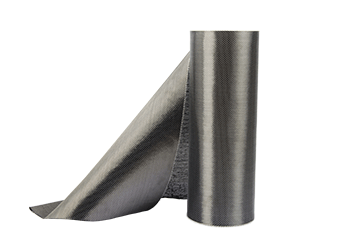Solutions
Horse Construction offers full range of structural strengthening materials with technical supports, documentation supports, products supports, project supports.
Brief Analysis of Carbon Fiber Reinforcement

Nowadays, the research on the reinforcement effect of carbon fiber during construction is increasing. Due to its advantages such as low degree of corrosion, durability, and low technical difficulty in construction, its selling price has also fallen sharply in recent years, and construction of reinforced engineering structures will use this product. Since the introduction of this technology, our country has never stopped the pace of its research, and its application has also made certain progress and results.
How to strengthen carbon fiber
Both glueable resin and carbon fiber cloth are used for reinforcement of steel and cement. The general work step is to stick the carbon fiber cloth on the surface of the reinforced concrete tensile area, so that each structure is combined with the higher-strength carbon fiber cloth and share the force, and finally achieve the goal of reinforcement.
The practical application of carbon fiber reinforcement work
(1) Scope of use
Pillars, beam structures, tunnels, and buildings used to store various items in engineering buildings may be damaged to varying degrees and affect the building's bearing capacity under external influences and their own use time. , You can use carbon fiber to repair or reinforce it. If the gap or damage does not affect the bearing capacity, carbon fiber can also be used in combination with resin glue to repair the building. Carbon fiber is beneficial to the building's vibration resistance and structural reinforcement, and it has a wide range of applications.

(2) Requirements for materials used
1. The various functions and indicators of carbon fiber materials should be consistent with product design standards.
2. The viscosity of the material used for bonding should reach the standard. During construction, the type of resin or product model used in each area of each component should be determined according to the construction environment, such as humidity, temperature, etc., and the dosage of each material should be strictly controlled. The speed, penetration, etc. of the fixed molding should be consistent with the season at that time.
3. The construction technicians should be proficient in various steps, and should pay attention to every detail of each stage, so that the material and the building can be combined perfectly.
(3) Construction points in details
1. Pay attention to the ratio of adhesive
2. Substrate processing
3. Apply primer
4. Use leveling materials for smoothing
5. Carry out the pasting work of carbon fiber cloth
6. Set the post-protection layer
Conclusion
Carbon fiber reinforcement technology is relatively new, and its advantages and advantages are more prominent than traditional technology. This process is beneficial to all aspects of the project, and it has no pollution to the ecological environment, and the project effect is very ideal. Reinforcing with carbon fiber is a relatively advanced technology at the moment, and we should also conduct in-depth research to explore its more beneficial value.
You can find anything here you are in need of, have a trust trying on these products, you will find the big difference after that.

High strength, unidirectional carbon fiber wrap pre-saturated to form a carbon fiber reinforced polymer (CFRP) wrap used to strengthen structural concrete elements.

High strength, unidirectional carbon fiber fabric pre-saturated to form a carbon fiber reinforced polymer (CFRP) fabric used to strengthen structural concrete elements.

High strength, unidirectional carbon fiber sheet pre-saturated to form a carbon fiber reinforced polymer (CFRP) sheet used to strengthen structural concrete elements.